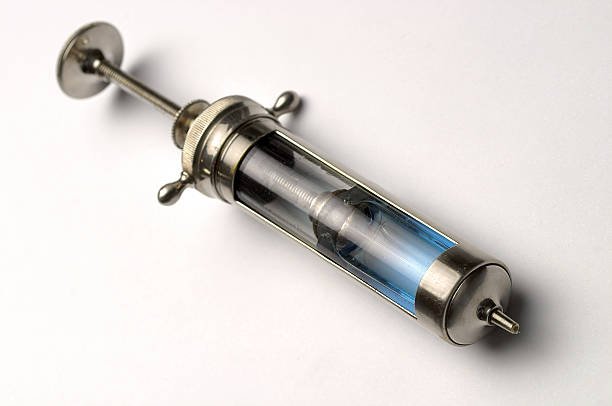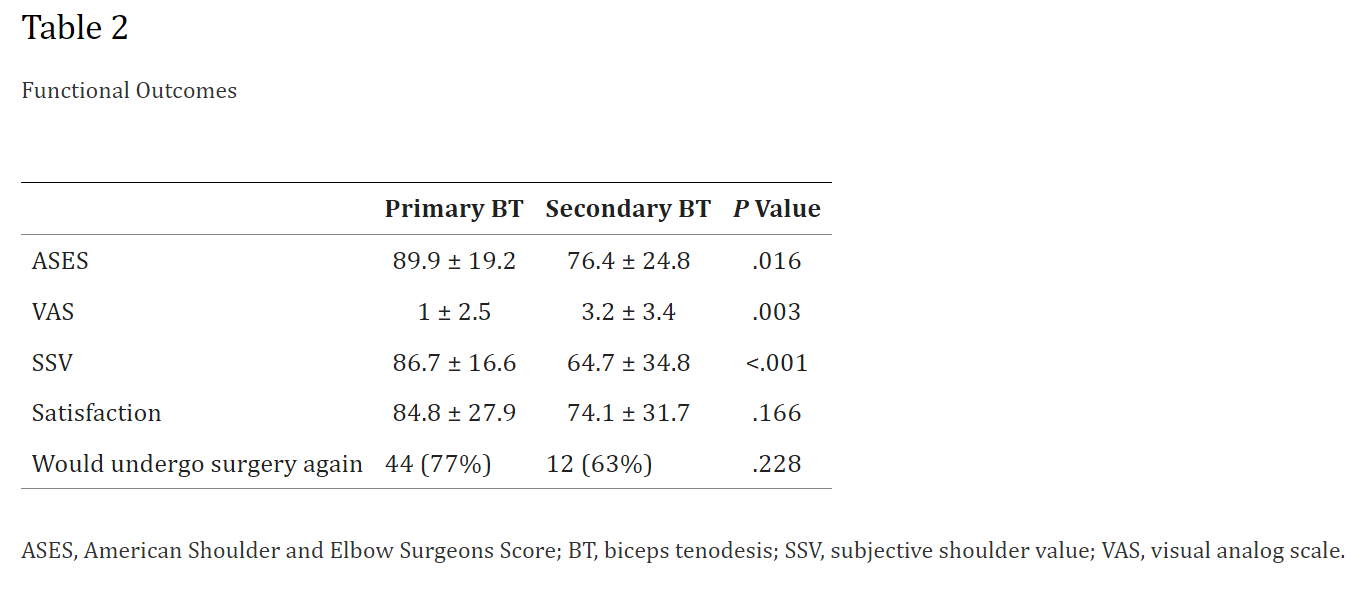
PUBLISHED
RESEARCH
SUPERIOR CAPSULAR RECONSTRUCTION FOR IRREPARABLE ROTATOR CUFF TEAR
Superior capsular reconstruction (SCR) was developed as a minimally invasive, innovate technique to restore normal shoulder biomechanics for patients who present with massive, irreparable rotator cuff tear (MIRCTs) that preclude shoulder arthroplasty. Current studies have shown that SCR for MIRCTs result in excellent short-term clinical outcomes, adequate pain relief, and functional improvement with low graft failure and complication rates. This article aims to critically evaluate the biomechanics, indications, procedural considerations, clinical outcomes, rehabilitation program, and complications associated with the SCR procedure.
USE OF INJECTIONS AND BIOLOGICS FOR THE NONOPERATIVE TREATMENT OF ROTATOR CUFF PATHOLOGY
This article contains a review of the current literature regarding the risks, benefits, and alternatives of the most common injections used in the treatment of rotator cuff pathology. Injection options covered include corticosteroids, biologics including platelet-rich plasma and stem cells, hyaluronic acid, and nonsteroidal anti-inflammatory drugs.
ISOMETRIC KNEE STRENGTH IS GREATER IN INDIVIDUALS WHO SCORE HIGHER ON PSYCHOLOGICAL READINESS TO RETURN TO SPORT AFTER PRIMARY ANTERIOR CRUCIATE LIGAMENT RECONSTRUCTION
Anterior cruciate ligament (ACL) injury is extremely common among athletes. Rate of second ACL injury due to surgical graft rupture or contralateral limb ACL injury is approximately 15-32%. Psychological readiness to return to sport (RTS) may be an important predictor of successful RTS outcomes. Psychological readiness can be quantified using the ACL Return to Sport after Injury (ACL-RSI) questionnaire, with higher scores demonstrating greater psychological readiness.
MENISCAL EXTRUSTION MEASUREMENTS AFTER POSTERIOR MEDIAL MENISCUS ROOT TEARS: A SYSTEMATIC REVIEW AND META-ANALYSIS
The purpose of this study was to evaluate the extent of heterogeneity in meniscal extrusion measurement techniques and reported extrusion values in knees with posterior medial meniscus root tears (PMMRTs). We hypothesized that meniscal extrusion measurement techniques would vary considerably throughout reported studies, with resultant wide-ranging published extrusion values.
A COMPREHENSIVE META-ANALYSIS OF CLINICAL AND BIOMECHANICAL OUTCOMES COMPARING DOUBLE-BUNDLE AND SINGLE-BUNDLE POSTERIOR CRUCIATE LIGAMENT RECONSTRUCTION TECHNIQUES
Posterior cruciate ligament (PCL) reconstruction techniques have historically focused on single-bundle (SB) reconstruction of the larger anterolateral bundle without addressing the codominant posteromedial bundle. The SB technique has been associated with residual laxity and instability, leading to the development of double-bundle (DB) reconstruction techniques.
ORAL KETOROLAC AS AN ADJUVANT AGENT FOR POSTOPERATIVE PAIN CONTROL AFTER ARTHROSCOPIC ANTERIOR CRUCIATE LIGAMENT RECONSTRUCTION: A PROSPECTIVE, RANDOMIZED CONTROLLED STUDY
Successful outpatient anterior cruciate ligament (ACL) reconstruction hinges on effective analgesia. Routinely, oral narcotic agents have been the preferred analgesic postoperatively in orthopaedic surgery. However, these agents have several known adverse effects and are associated with a potential for abuse. This study evaluates the efficacy of ketorolac, a nonsteroidal anti-inflammatory drug with analgesic properties, as an adjuvant agent for postoperative pain control after ACL reconstruction.
BICEPS TENODESIS IN PATIENTS AGE 35 YEARS AND YOUNGER YIELDS FAVORABLE CLINICAL OUTCOMES WITH VARIABLE RATES OF RETURN TO SPORT AND COMPLICATIONS: A SYSTEMATIC REVIEW
A literature search was performed by querying Scopus, EMBASE, and PubMed computerized databases from database inception through August 2022 in accordance with the 2020 Preferred Reporting Items for Systematic Review and Meta-Analysis guidelines. Studies that evaluated clinical outcomes following biceps tenodesis in patients aged 35 years or younger were included. Study quality was assessed via the Methodological Index for Non-Randomized Studies criteria. Clinical outcomes, RTS rates, and complications were aggregated.
INJURY RATES REMAINED ELEVATED IN THE SECOND NATIONAL FOOTBALL LEAGUE SEASON AFTER THE ONSET OF THE COVID-19 PANDEMIC
Publicly released NFL weekly injury reports were queried to identify players listed as "out" or placed on injured reserve (IR) for at least one game in the 2018-2021 seasons. Injuries were then categorized into upper extremity, lower extremity, spine/core, and head. Incidence per 1,000 athlete exposures were calculated for each season and proportions of injuries by position were calculated separately for the 2018-2019, 2020, and 2021 cohorts. Incidence rate ratios (IRR) were used to compare injury rates.
NATURAL LANGUAGE PROCESIONG: USING ARTIFICIAL INTELLIGENCE TO UNDERSTAND HUMAN LANGUGAGE IN ORTHOPEDICS
The purpose of this study is to provide an overview of the tasks required to develop an NLP pipeline for orthopedic research and present recent examples of successful implementations.
SUTURE ANCHOR-BASED QUADRICEPS TENDON REPAIR MAY RESULT IN IMPROVED PATIENT-REPORTED OUTCOMES BUT SIMILAR FAILURE RATES COMPARED TO THE TRANSOSSEOUS TUNNEL TECHNIQUE
The purpose of this study was to compare failure rates and patient-reported outcomes between transosseus (TO) suture and suture anchor (SA) quadriceps tendon repairs.
SEX-BASED DIFFERENCES IN ADULT ACL RECONSTRUCTION OUTCOMES
In the setting of ever improving outcomes following anterior cruciate ligament (ACL) reconstruction, both objectively and subjectively, there remains continued interest in better understanding the differences in outcomes between male and female patients. The current review investigates the recent literature surrounding the roles of biological sex in adult ACL reconstruction outcomes.
POSTERIOR LATERAL MENISCAL ROOT AND OBLIQUE RADIAL TEARS: THE BIOMECHANICAL EVIDENCE SUPPORTS REPAIR OF THESE TEARS, ALTHOUGH LONG-TERM CLINICAL STUDIES ARE NECESSARY
o provide a framework for discussion of our concerns, the posterior lateral meniscal anatomy and tear classification systems are reviewed. We then discuss the biomechanical influence of these tears in the context of knee laxity and contact mechanics. Next, the epidemiology of this tear type and the clinical importance of meniscal preservation in the setting of concomitant ACL reconstruction is discussed.
PRIMARY BICEPS TENODESIS IS SUPERIOR TO REVISION FOLLOWING FAILED SLAP REPAIR
To compare satisfaction and return to play (RTP) rates between patients undergoing primary biceps tenodesis for a symptomatic SLAP tear and patients undergoing secondary biceps tenodesis following a failed SLAP repair.
GRAFT OPTIONS FOR HIP LABRAL RECONSTRUCTION
Arthroscopic hip labral reconstruction is a complex procedure which is growing in use as indications, techniques, and surgical expertise advance.
Graft selection is an important component of labral reconstruction based on relative advantages and disadvantages of available types of autografts and allografts.
INTEROBSERVER RELIABILITY AND CHANGE IN THE SAGITTAL TIBIAL TUBERCLE-TROCHLEAR GROOVE DISTANCE WITH INCREASING KNEE FLEXION ANGLES
This study aims to (1) describe interobserver reliability of the sTT-TG distance and (2) characterize the change in the sTT-TG distance with respect to changing knee flexion angles. In this cadaveric study, six nonpaired cadaveric knees underwent magnetic resonance imaging (MRI) studies at each of the following degrees of knee flexion: -5, 0, 5, 10, 15, and 20. The sTT-TG distance was measured on the axial T2 sequence. Four reviewers measured this distance for each cadaver at each flexion angle. Intraclass correlation coefficients were calculated to determine interobserver reliability and reproducibility of the sTT-TG measurement.
INFLUENCE OF PELVIC ROTATION ON LOWER EXTREMITY KINEMATICS, ELBOW VARUS TORQUE, AND BALL VELOCITY IN PROFESSIONAL BASEBALL PITCHERS
Early pelvic rotation has been associated with decreased throwing arm kinetics in college baseball pitchers, though professional pitchers have yet to be examined.
Our objective is to investigate the effect of pelvic rotation on trunk, pelvis and lower extremity kinematics, as well as throwing arm kinetics and pitch velocity in professional baseball pitchers.
SHOULDER ARTHROPLASTY FOLLOWING SOLID ORGAN TRANSPLANT: A SYSTEMATIC REVIEW AND META-ANALYSIS
The purpose of this study is to report a systematic review and meta-analysis of solid organ transplant (SOT) patients undergoing shoulder arthroplasty to compare functional and radiographic outcomes, demographics, and complications with non-transplant patients.
A PRACTICAL GUIDE TO THE DEVELOPMENT AND DEPLOYMENT OF DEEP LEARNING MODELS FOR THE ORTHOPEDIC SURGEON: PART I
This review provides a practical guide for the Orthopedic surgeon to understand the steps needed to design, develop, and deploy a deep learning pipeline for clinical applications. A detailed description of the processes involved in defining the problem, building the team, acquiring and curating the data, labeling the data, establishing the ground truth, pre-processing and augmenting the data, and selecting the required hardware is provided. In addition, an overview of unique considerations involved in the training and evaluation of deep learning models is provided.
FACTORS THAT AFFECT THE MAGNITUDE OF TIBIAL TUBERCLE-TROCHLEAR GROOVE DISTANCE IN PATIENTS WITH PATELLAR INSTABILITY
The purpose of our study was to determine the underlying anatomic factors contributing to TT-TG distance. We hypothesized that degree of tubercle lateralization and knee rotation angle may substantially predict TT-TG.





















